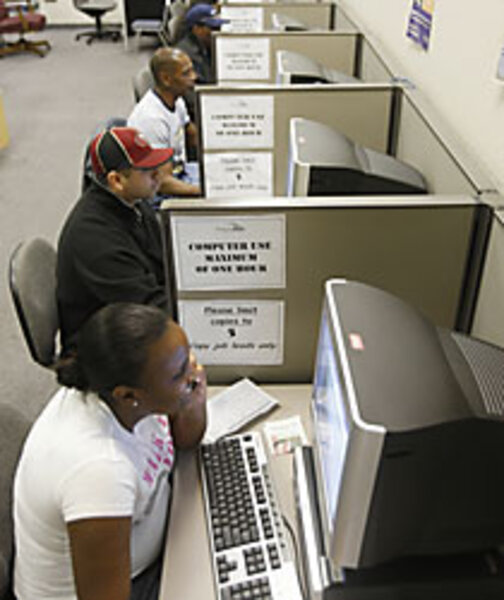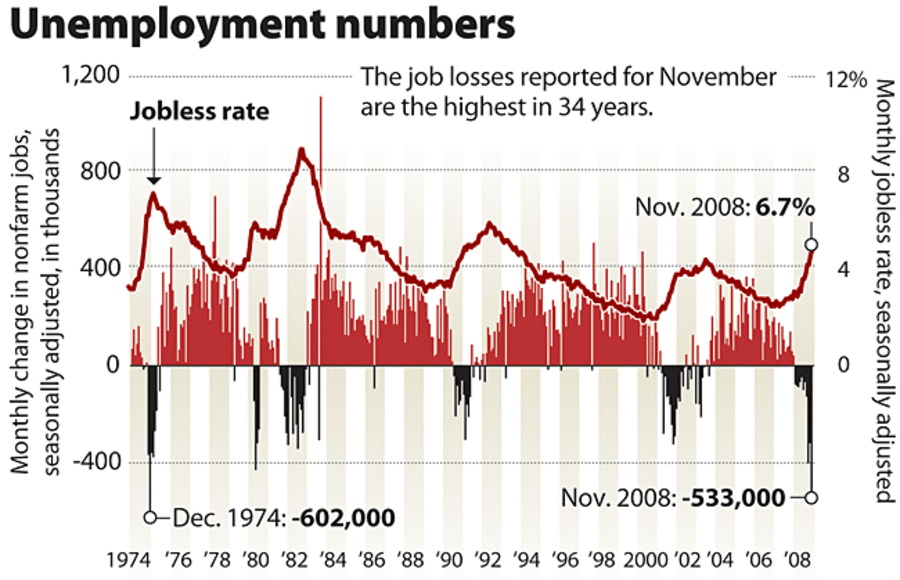US task: Put jobless into jobs
Loading...
| New York
Needed: a job plan.
Suddenly beset by the worst monthly layoffs since 1974, Americans are starting to struggle with how to find employment for the millions who are losing jobs in the recession.
Should government spend billions on retraining programs, create tax incentives for businesses that hire new workers, fund green infrastructure projects, or just provide massive Depression-era make-work programs?
The answers to those questions will involve a key issue: whether the unemployed will have the right skills and be in the right location to take advantage of new jobs.
President-elect Obama has described the outlines of a recovery plan that would create more than 2 million jobs. On Saturday, in a weekly radio address, he cited plans to upgrade roads and schools as part of what would be the biggest infrastructure investment since the 1950s.
Mr. Obama's comments follow the Labor Department's report last Friday that the United States lost 533,000 jobs and the unemployment rate rose to 6.7 percent in November. Over the past three months, job losses have totaled 1.2 million, a statistic that implies that a sharp contraction of the economy is under way.
"These numbers basically provide support for Obama to have a program in place in January," says John Silvia, chief economist at Wachovia Economics Group in Charlotte, N.C.
The size of the November layoffs shocked economists. The layoffs spread to almost every sector – from manufacturing to services, which accounted for 70 percent of the layoffs.
"This is stunning, in the sense of a deer caught in the headlights," says Stuart Hoffman, chief economist for PNC Financial Services in Pittsburgh. "We are seeing a total collapse in consumer confidence in the economy, and business is laying people off and not hiring."
Many economists expect the Obama administration to present a massive economic stimulus program. Bernard Baumohl of the Economic Outlook Group in Princeton, N.J., anticipates a $500 billion to $1 trillion plan, possibly spread over two years. "It's going to be targeted to the kinds of programs that have a multiplier effect on the economy," he says.
One target is likely to be construction, which has been hard hit by the recession. At its peak in 2007, about 1 million people were involved in heavy construction. That number is now down to 946,000, according to the Department of Labor.
For every $1 billion in government infrastructure spending, 28,000 new jobs are created, according to a federal study quoted by Kenneth Simonson, chief economist at the Associated General Contractors of America. But only about 25 percent of those jobs are for construction workers. Another 25 percent are supplying industries, such as for concrete or lumber. The rest are jobs like retail and others created indirectly because workers are spending money.
Still, many workers may find they have to change professions or locations to find work. "One thing we have learned is that you need a lot of flexibility and capacity to move around geographically and occupationally," says Don Grimes, senior research specialist at the Institute for Research on Labor, Employment, and the Economy at the University of Michigan at Ann Arbor.
In addition, says Mr. Grimes, citing the experience of past recessions, most people who find new employment will take a pay cut. "That is almost universally true," he says.
In past recessions, certain industries, such as the steel industry, have been decimated. "Tens of thousands of them ended up retiring," he says. "Some ended up working at Home Depots or Wal-Marts and ended up with a lower quality of life than they were expecting."
For the most part, Grimes says, job-retraining programs have also not worked. "I know some [programs] were running in Michigan for laid-off auto workers," he says. "But as soon as the auto industry turned around, they went back to their jobs, short-circuiting their training."
Some jobs may be lost permanently, says economist David Wyss of Standard & Poor's in New York. For example, some jobs in finance and real estate may not return. "There are probably too many real estate brokers," he says. "They are reemployable and can usually get a new job once they get the training."
Finding new jobs for people involved in retail and some parts of the service sector could be more difficult, Mr. Wyss says. "People are not buying goods, and those that are go to Wal-Mart, who hires fewer employees."
Sometimes in the past, small businesses have absorbed workers. But those jobs, too, are disappearing, says Richard DeKaser, chief economist at National City, a Cleveland bank, which surveys Midwest business. "We're finding small business has trimmed its hiring plans," he says.
Some areas that are still hiring may not help those being laid off. This includes healthcare. Even in November, the Department of Labor reports that this sector added 34,000 jobs. "It's pretty recession-proof, especially for doctors and nurses," says Wyss.
For others, it may just be a matter of time for the economy to begin to respond to stimulus, says Sung Won Sohn, an economics professor at the Smith School of Business, California State University.
"There is no short-term fix," says Mr. Sohn. "The fastest thing you can do is ask people to show up for work, and the government will find make-work projects like cleaning streets or building houses and bridges."







